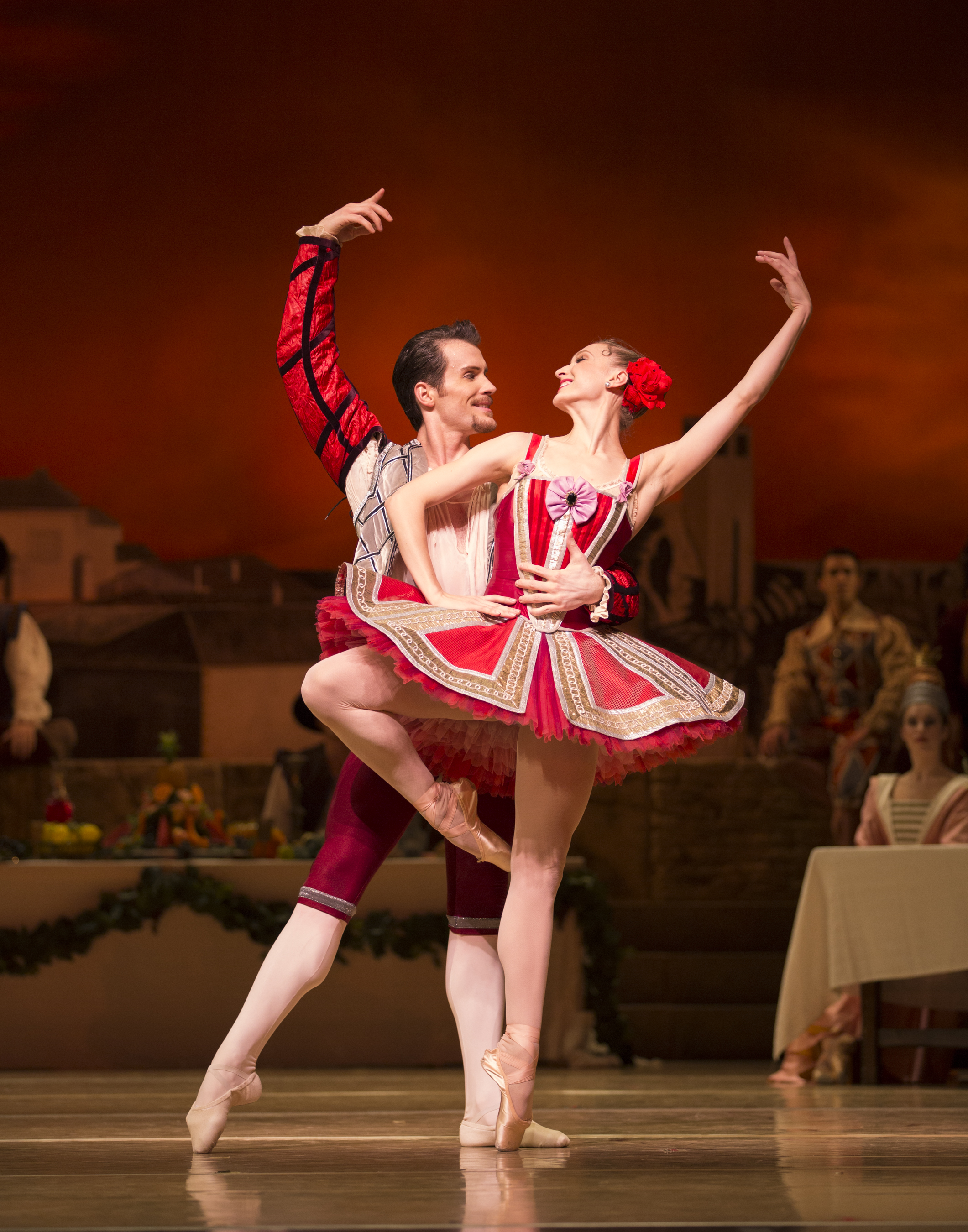There is nothing subtle about Don Quixote. The Spanish-inflected dancing (full of big virtuoso tricks), the thumping rhythms in the score, and the lavish theatrical byplay almost jump off the stage and into your lap. By the time Marius Petipa made the entertainment in 1869, using a minor subplot from Cervantes’ novel, he was becoming an expert at transferring exotic locales or characters into the structures of classical ballet. And while many contemporary productions have streamlined the storytelling and cut back on the mime, Pacific Northwest Ballet’s 2012 version, first staged by Alexei Ratmansky, restores a big helping of the original details. It’s a work packed full of bravura roles for multiple dancers and a selection of meaty character-acting parts to move the story along.
Kitri, the innkeeper’s daughter, is in love with the barber Basilio, but her father wants her to marry another, richer man. After some adventures in the countryside for them and for Don Quixote, the two lovers manage to trick her father into blessing their marriage, and the wedding celebration fills the last act with the kind of technical challenges that Petipa adored.
Several dancers are returning to roles they’ve performed before; there are some major debuts, too. Carla Korbes is back as Kitri, this time with Batkhurel Bold as Basilio, and the two obviously relish building on their previous performances. Korbes is at that sweet spot in her career where she has both technical and interpretive skills, so that she can imagine what is possible—and accomplish it. Bold shares her confidence, giving one of his best performances, his formidable power balanced with buoyant enthusiasm.
Two other couples alternate in the lead roles: Lindsi Dec adds Kitri to her repertory, dancing with her husband Karel Cruz. It’s a pleasure to see their personal relationship bolstering their performance: Dec dances this challenging role with a veteran’s aplomb, while Cruz’s usual noble style and smooth technique are consistent. Another Basilio, Seth Orza, returns from a knee injury and rehab with attack intact, relishing his time onstage. Elizabeth Murphy takes a step forward to match his zest as Kitri.
Petipa was known for creating many smaller parts for dancers at all points in their careers. Carli Samuelson has incredible snap as Cupid, dancing the highly mannered solo with great integrity. Sarah Ricard Orza demonstrates real versatility by shifting from the smoldering street dancer Mercedes (during the matinee) to the graceful Queen of the Dryads (that evening). And Leta Biasucci and Angelica Generosa pounce on the choreography for Kitri’s friends, making some really difficult material seem like a game.
Non-dancing actors Allen Galli and Tom Skerritt return to their roles as Sancho Panza and Don Quixote, respectively. Skerritt’s more naturalistic style contrasts with Galli’s, whose background in commedia dell’arte and physical comedy makes his Sancho a wonderful straight man. Their presence bookends the production, so that at the end of the ballet we wonder where they might be going next and what adventures they might find.
stage@seattleweekly.com
DON QUIXOTE McCaw Hall, 321 Mercer St. (Seattle Center), 441-2424. $30–$184. Runs Thurs.–Sun. See pnb.org for schedule. Ends Feb. 8.








